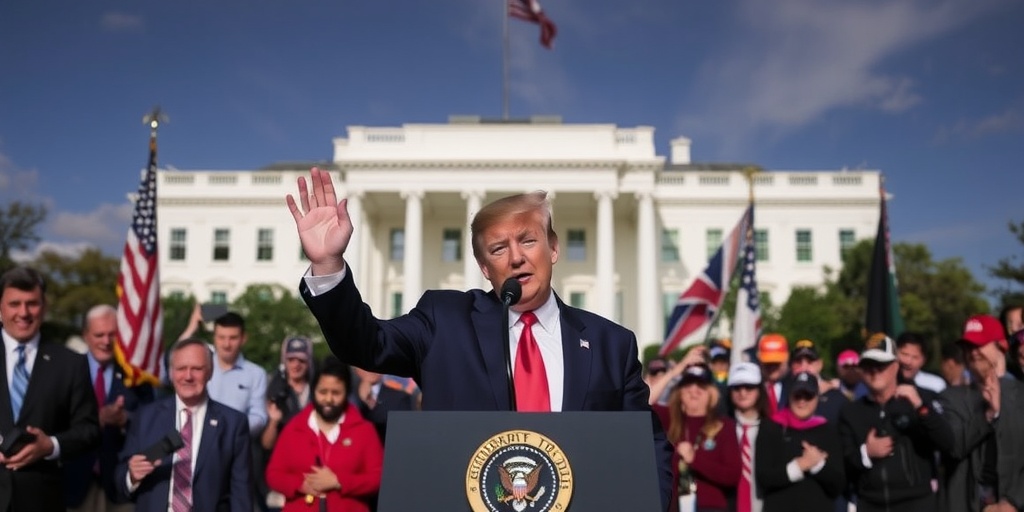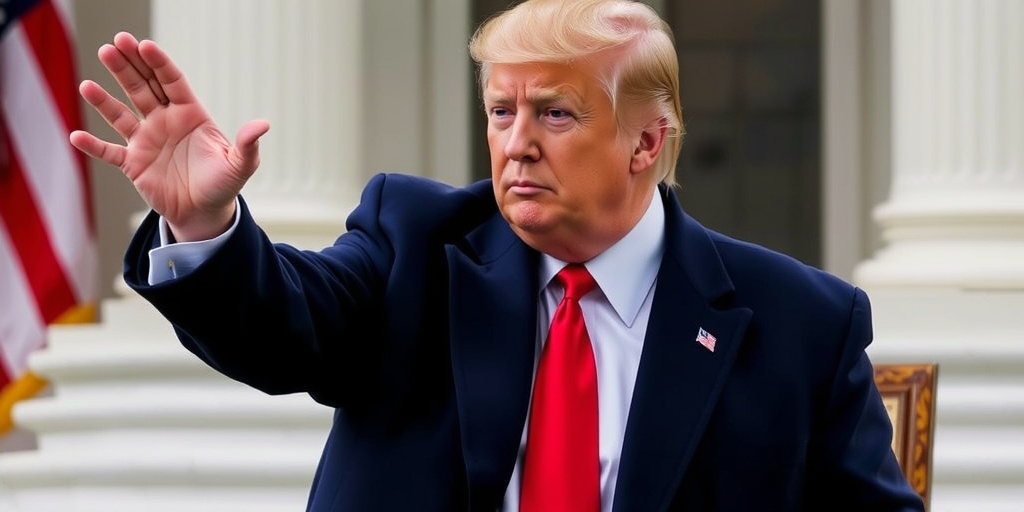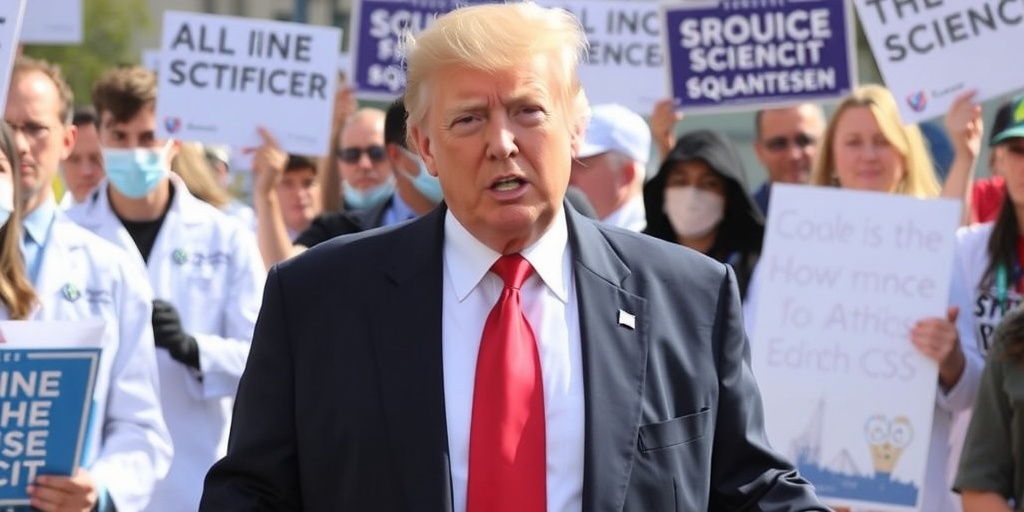Now Reading: Trump’s Shift: From Supporting Neighbors to Harming Them
-
01
Trump’s Shift: From Supporting Neighbors to Harming Them
Trump’s Shift: From Supporting Neighbors to Harming Them

Title: U.S. Tariffs on Canada and Mexico Signal Economic Warfare
In a decisive shift in trade policy, President Trump has announced the imposition of a sweeping 25 percent tariff on approximately $1 trillion worth of imports from Canada and Mexico. This move, which effectively dismantles decades of economic integration fostered by the North American Free Trade Agreement (NAFTA), raises significant concerns about the future economic stability of both neighboring countries and the United States.
The tariffs are anticipated to dramatically increase costs associated with Canadian and Mexican exports, potentially pushing their economies towards recession. Experts suggest that while some manufacturing operations might shift to the U.S. to evade tariffs, American consumers and manufacturers will face heightened costs as they rely heavily on imported materials from their northern and southern neighbors.
Edward Alden, a senior fellow at the Council on Foreign Relations, expressed grave concerns over this turn of events. "This is a day where the United States stopped seeing trade as a force for mutual benefit and began seeing it as a tool of economic warfare," he stated, characterizing the tariffs as a fundamental threat to the economic health of America’s closest neighbors.
In a recent address to Congress, Trump framed these tariffs as a means of protecting American jobs and reinforcing national strength, claiming that they were part of a broader effort to "make America great again." However, economists warn that the repercussions could be severe. With trade comprising about a quarter of the U.S. economic activity while accounting for roughly 70 percent of Canada’s and Mexico’s, the implications are considerable. Both of these countries export around 80 percent of their goods to the United States, contrasting sharply with the roughly one-third of U.S. exports that go to Canada and Mexico.
Tony Stillo, a director of Canadian economics at Oxford Economics, warned that the tariffs could push Canada into a recession, with inflation rates soaring and unemployment expected to rise above 8 percent. He emphasized that Trump’s trade war would severely disrupt established production and supply networks across North America, leading to long-lasting consequences for both economies.
Marcus Noland of the Peterson Institute for International Economics predicted that Mexico’s growth could suffer a setback of about two percentage points due to the tariffs, with significant factory closures and job losses likely to follow. Some businesses have already begun reevaluating their operations in light of these threats, with Randy Carr, CEO of World Emblem, indicating plans to establish a secondary factory in the Dominican Republic and reconsider manufacturing options in the U.S. if tariffs persist.
U.S. industries heavily dependent on raw materials from Canada and Mexico will also face increased production costs, possibly leading to business closures as profit margins shrink. Analysts at S&P Global Ratings suggest that the tariffs could diminish U.S. GDP by 0.6 percent over the next year, while Canadian and Mexican GDPs might drop by 2 to 3 percent from previous projections.
A stark contradiction to the previously established trade agreements, Trump’s decision directly undermines the United States-Mexico-Canada Agreement (USMCA), which he touted as a "colossal victory" for American workers when it was signed. The implications of disregarding this agreement could stifle future investments and result in significant losses for companies that had made substantial commitments based on its provisions.
Despite the tumultuous economic landscape, some American automakers have voiced gratitude for a brief reprieve from the tariffs. However, industry leaders warned that imposing tariffs on cars and parts from Canada and Mexico could obliterate their profit margins, driving their operational costs to unsustainable levels.
The tariffs have also undermined trust between the U.S. and its neighbors, prompting Canada to tighten visa regulations and increase border security measures in response to U.S. pressures. Mexican authorities have actively dispatched troops to the border and taken measures against drug cartels, reinforcing security along the shared boundary. Despite these actions, Prime Minister Justin Trudeau condemned the tariffs as “completely bogus, completely unjustified,” warning that such a conflict would ultimately harm the U.S. economy as well.
While some labor groups, like the United Auto Workers, support Trump’s tariff strategy as an effort to dismantle harmful trade practices that have affected American workers, other sectors have criticized the approach as counterproductive. The National Council of Textile Organizations cautioned that tariffs on North American trade would unintentionally benefit overseas competitors while damaging domestic industries and exacerbating migration and other issues.
As these unfolding events demonstrate, the long-term ramifications of Trump’s policies could mirror the dislocations caused by previous agreements like NAFTA, which, while expanding the U.S. economy, left certain sectors—especially textile and labor-intensive industries—suffering significant job losses.
In conclusion, President Trump’s tariff decision marks a pivotal juncture in U.S. trade policy, raising essential questions about the balancing act between national interests and the economic interdependencies that define North America. The potential fallout from these tariffs could reverberate throughout the continent, highlighting the delicate nature of international commerce and cooperation.
Stay Informed With the Latest & Most Important News
Previous Post
Next Post
-
 01New technology breakthrough has everyone talking right now
01New technology breakthrough has everyone talking right now -
 02Unbelievable life hack everyone needs to try today
02Unbelievable life hack everyone needs to try today -
 03Fascinating discovery found buried deep beneath the ocean
03Fascinating discovery found buried deep beneath the ocean -
 04Man invents genius device that solves everyday problems
04Man invents genius device that solves everyday problems -
 05Shocking discovery that changes what we know forever
05Shocking discovery that changes what we know forever -
 06Internet goes wild over celebrity’s unexpected fashion choice
06Internet goes wild over celebrity’s unexpected fashion choice -
 07Rare animal sighting stuns scientists and wildlife lovers
07Rare animal sighting stuns scientists and wildlife lovers




















